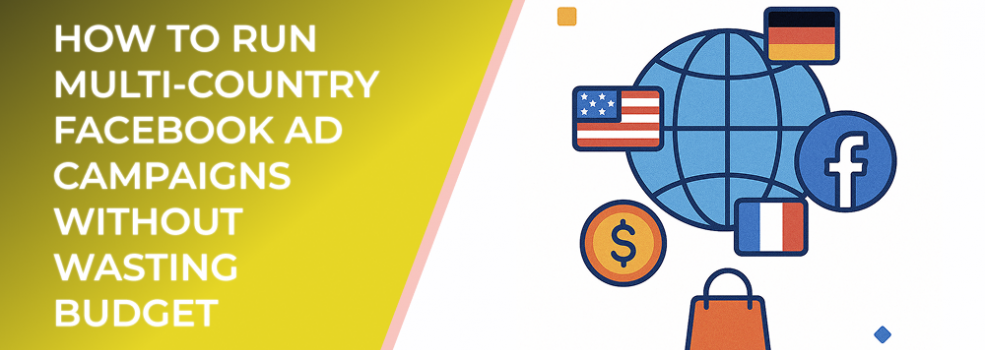Running ads in several countries means dealing with different languages, currencies, costs per click (CPCs), and cultural responses. According to Meta’s performance data, CPCs can vary by more than 400% between regions, and audience behaviors differ significantly across markets.
Without the right setup, Facebook’s algorithm may favor cheaper markets while ignoring higher-value ones. This often results in wasted ad spend and poor overall performance.
Step 1: Choose the Right Campaign Structure
If you’re targeting multiple countries, avoid dumping them all into one ad set. Instead, use one of these two structures:
1. Separate Ad Sets by Country
Ideal when you have moderate budgets. This setup gives you control over spending per country and allows localized optimization. You can adjust bids, creatives, and messaging for each market.
2. Group Similar Markets Together
If you’re targeting many small or similar markets (e.g., Western Europe or Latin America), group them by language and cost tier. This helps Meta’s algorithm find efficiencies while maintaining performance consistency.
Step 2: Localize Creatives and Copy
Even when countries share a language, cultural nuances matter. For example, “fitness offers” or “holiday sales” perform differently across the UK, Australia, and the U.S.
Tips for localization:
-
Adjust visuals to fit regional preferences.
-
Use local spelling and slang (e.g., “favourite” vs. “favorite”).
-
Adapt seasonal references and offers to regional calendars.
Localized creative can improve engagement rates by up to 70%, according to Meta’s ad performance benchmarks.
Step 3: Manage Budgets Smartly
Budget allocation is where most multi-country campaigns go wrong. Facebook’s Advantage+ campaign budget optimization (CBO) can be helpful—but only when countries have similar cost levels.
Best practices:
-
Start with manual budgets for each country to monitor performance.
-
Once data stabilizes, switch to CBO to let Facebook optimize delivery.
-
Keep monitoring spend distribution—CBO often over-favors cheaper regions.
To ensure balance, use cost caps or minimum spend limits on high-value markets.
Step 4: Test and Learn Before Scaling
Before scaling across all countries, start with 2–3 test markets. Focus on learning:
-
Average CPC and cost per lead per country.
-
Which creatives and CTAs resonate best.
-
How language and time zones affect conversion timing.
Once your benchmarks are clear, expand gradually to other markets. This minimizes wasted ad spend while ensuring the algorithm learns efficiently.
Step 5: Leverage Time Zone and Ad Scheduling
Running one global campaign means your ads could show at 3 a.m. in some countries. Use ad scheduling to deliver during peak hours in each region.
Data from Meta’s Ad Manager shows that scheduling can reduce wasted impressions by up to 25%, especially in markets with distinct work and shopping habits.
Step 6: Analyze Performance by Country
Always break down your campaign data by country, even if it’s grouped under one ad set. Key metrics to compare:
-
CPC and CPM (cost efficiency)
-
CTR (creative engagement)
-
Conversion rate (landing page match and user intent)
-
ROAS (return on ad spend)
If one country underperforms, pause or adjust it instead of cutting the entire campaign. This helps maintain ROI while refining geographic focus.
Final Thoughts
Running multi-country Facebook ads is one of the best ways to scale globally—but only if done with precision. The key is balancing localization with automation: tailor creatives and budgets while letting Facebook’s algorithm optimize intelligently.
A structured, data-driven approach ensures your ads perform consistently across borders—without wasting a single dollar.
Suggested Reading
If you found this article helpful, you might also like:

